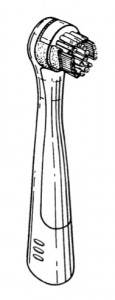 Entire industries are built around the business model of a cheap product and expensive consumables for that product – think ink jet printers, electric toothbrushes and shaving razors. Controlling replacement parts also is a lucrative sideline for manufacturers of big-ticket items – prime examples are automobile fenders and other collision repair parts.
Entire industries are built around the business model of a cheap product and expensive consumables for that product – think ink jet printers, electric toothbrushes and shaving razors. Controlling replacement parts also is a lucrative sideline for manufacturers of big-ticket items – prime examples are automobile fenders and other collision repair parts.
So why don’t competitors step in and make the ink jet cartridge, shaving razor cartridge, toothbrush head or automobile fender for cheap and undercut the manufacturers’ prices?
The insurance industry and generic parts manufacturers have tried for years to convince Congress to limit design patent protection for automobile collision replacement parts, with bills introduced in 2010, 2012, 2013 and, most recently, 2015 (the PARTS Act, H.R. 1057 and S. 560). If the PARTS Act becomes law, it will apply only to OEM automobile manufacturers and will limit the life of a design patent for a collision replacement part to 30 months rather than the usual 14 years. Thus far, the insurance and generic parts industry bills have met with no success. A design patent continues to be a valuable tool to control the market for replacement parts and consumables.
— Robert Yarbrough, Esq.

